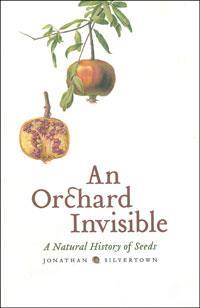An orchard invisible: a natural history of seeds
An orchard invisible: a natural history of seeds
Jonathan Silvertown
Chicago, US: University of Chicago Press 2009 | 224pp | ?17.50 (HB)
ISBN 9780226757735
Reviewed by Mary Daniels

In a year when so much has been published on evolution in the animal kingdom it is interesting to read a book on seeds, which lie at the heart of evolution in the plant kingdom. The author traces the evolution of angiosperms from fernlike ancestors - as with sex in animals, seed production has enabled plants to spread into virtually all habitats on earth, displaying an enormous diversity in form and function.
Silverman explores the diversity of seeds from tiny dustlike particles in the case of orchids to the huge double coconut, their dormancy and germination, and their storage of nutrients for the early boost to plant life.
The evolutionary success of food plants has in turn been of enormous importance to animal life, and the author outlines how we humans have taken advantage of their storage of starch and oils in our production of food and drink. Seeds have a dark side too, and Silverman outlines the many plants which produce poisonous substances such as ricin and cyanides. We also take advantage of the flavouring properties of seeds in our use of coffee, chocolate etc.
This book is one of those that keep our attention with many interesting sidelights from the witches of Salem to Lyme disease.
Further Reading
L Copeland and M McDonald, Principles of seed science and technology (4th edn, 2001). Kluwer.
ISBN 9780792373223
M Black, J D Bewley and P Halmer, The encyclopedia of seeds: science, technology and uses (2006). CABI Publishing. ISBN 9780851997230












No comments yet